
記者/譯者
A Brief Notes on the Food and Beverage Fields in Taipei (1)
black spot chicken
No. 2, Huating Street, Datong District, Taipei City Hours: Monday-Saturday 10:00-15:00
My routine is a bit older, and I usually get up at 5 or 6 o'clock to have breakfast, so I eat lunch earlier, so I know a lot of places to eat "brunch".
Of course, old-fashioned tastes for the old man’s work and rest: this chicken stall at the rear railway station, which opens at ten o’clock, is one of my favorite brunch options recently. (In other words, the place name "Hou Railway Station" itself is also very nostalgic, because as early as 1989, after the railway was underground, there is no distinction between the front and rear stations of Taipei Main Station.
It said it was brunch, but in fact, many of the people lining up at the scene were like me. They seemed to be middle-aged and elderly people who couldn’t sleep after dawn—we came to eat “lunch” (but the food here is refreshing, and it can be eaten for breakfast). absolutely okay.
My favorite combination is chicken oil rice with vegetable soup, and a plate of chicken + half-boiled egg for 70 yuan ─ especially the bowl of white rice topped with chicken oil and scallions, which is so fragrant that it is very suitable to wake up. Taste buds still in bed.
Although I can't find chicken rice in Chiayi in Taipei, thanks to this chicken stall, at least I feel that being a Taipei native is not too sad.
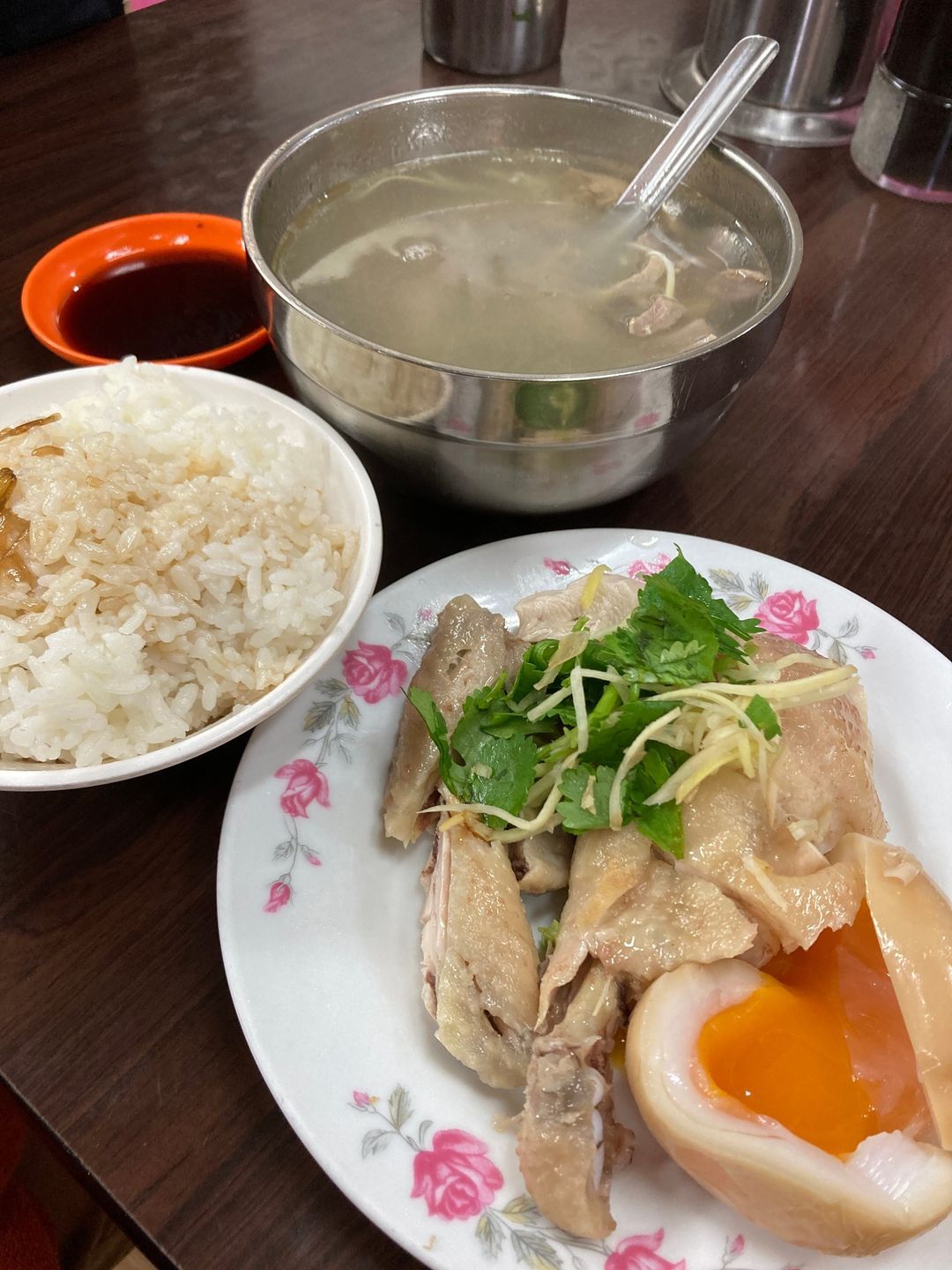
MyCroissant by Guillaume
No. 5, Lane 35, Section 2, Anhe Road, Daan District, Taipei City Opening Hours: Daily 08:00–20:00
When I was studying in Spain more than ten years ago, one euro was worth 50 Taiwan dollars. No matter what it was, it was too expensive to eat out. I didn’t dare to eat out. In the supermarket, buy baguettes and croissants for 0.5 euros, and add a liter of long-lasting milk to eat.
But because I ate it so often, for a long time after I came back to Taiwan, I felt nauseous when I saw the baguettes—besides, until five or six years ago, bakeries in Taipei were almost completely covered by Taiwanese and Japanese. European-style bread dominates, and it is difficult to find delicious and inexpensive European-style bread.
In recent years, however, some European-owned bakeries have also begun to appear in Taipei; this one in and around Xinyi An is one example of this wave.
I especially like their croissants: the outer layer is crispy and the inner layer is fluffy and not soft, and every bite will burst out with a rich creamy flavor; the best is the sharp corners at both ends, with caramelized sweetness and crispness ─ ─ I want to know a family Whether the flour and cream used in bakeries are good or not, the easiest way is to look at the basic version of Croissant.
Their other items are delicious too, like sweet and sour French apple pie, or frosted almond croissants for breakfast or an afternoon snack.
Another interesting point is that in the early days, this store inherited the European routine and opened at seven o’clock. In France and Germany, bread is a very important necessities for people’s livelihood. It usually opens before seven in the morning, using freshly baked bread. Serve all beings.
It's a pity that in Taiwan, people who get up so early don't usually eat bread, so this store was changed to open at 8 o'clock later, which made me often stand in front of the store and wait for them to open.
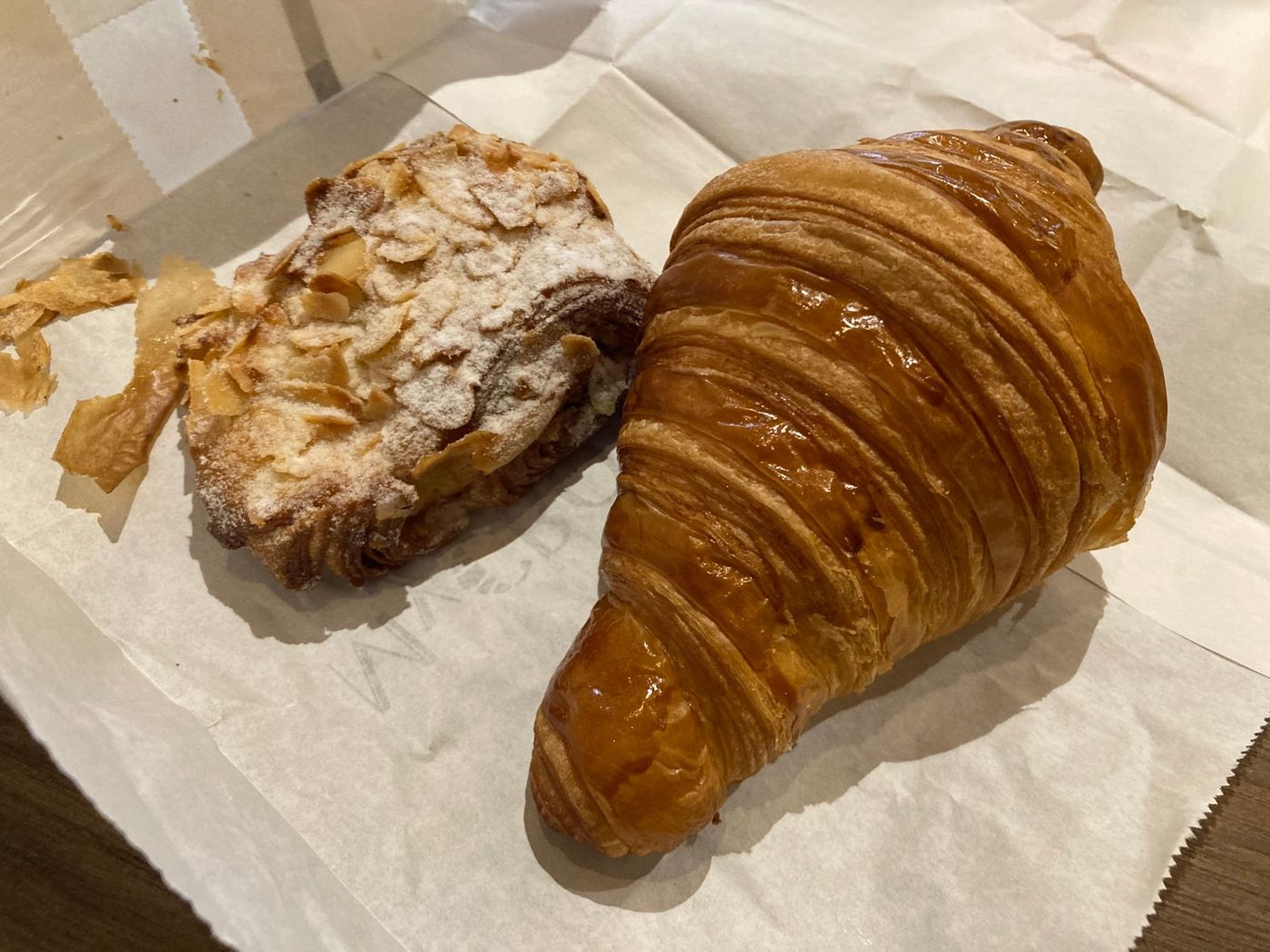
Angry Korean daughter-in-law
No. 163, Section 6, Zhongshan North Road, Shilin District, Taipei City Opening Hours: Tuesday-Sunday 11:00–14:30; 17:00–21:00
A few years ago, my Korean friend suddenly lost his mind and sent his (Taiwanese) husband to a long-established Korean restaurant as an apprentice. After training with the devil for a whole year, he returned to Taipei to open a Korean restaurant.
When the weather was cold, I suddenly wanted to eat Seoljong soup (설렁탕). I asked and found out that they did not sell it, so I was recommended Beef Bone Soup (갈비탕). After serving the table, I was astonished. I was used to eating in Korea with that kind of rough and arrogant taste, but when I moved to Taiwan, it was a little more delicate and gentle.
More importantly, there is unlimited supply of kimchi here, and the proprietress will always take the initiative to add it to you, and I feel like I am really back in Korea (solemnly declare: any kimchi that cannot be renewed is not an authentic Korean restaurant). I heard that they opened the store in March, and it took only two months to almost recover the cost of the restaurant's initial investment, which shows how delicious it is.
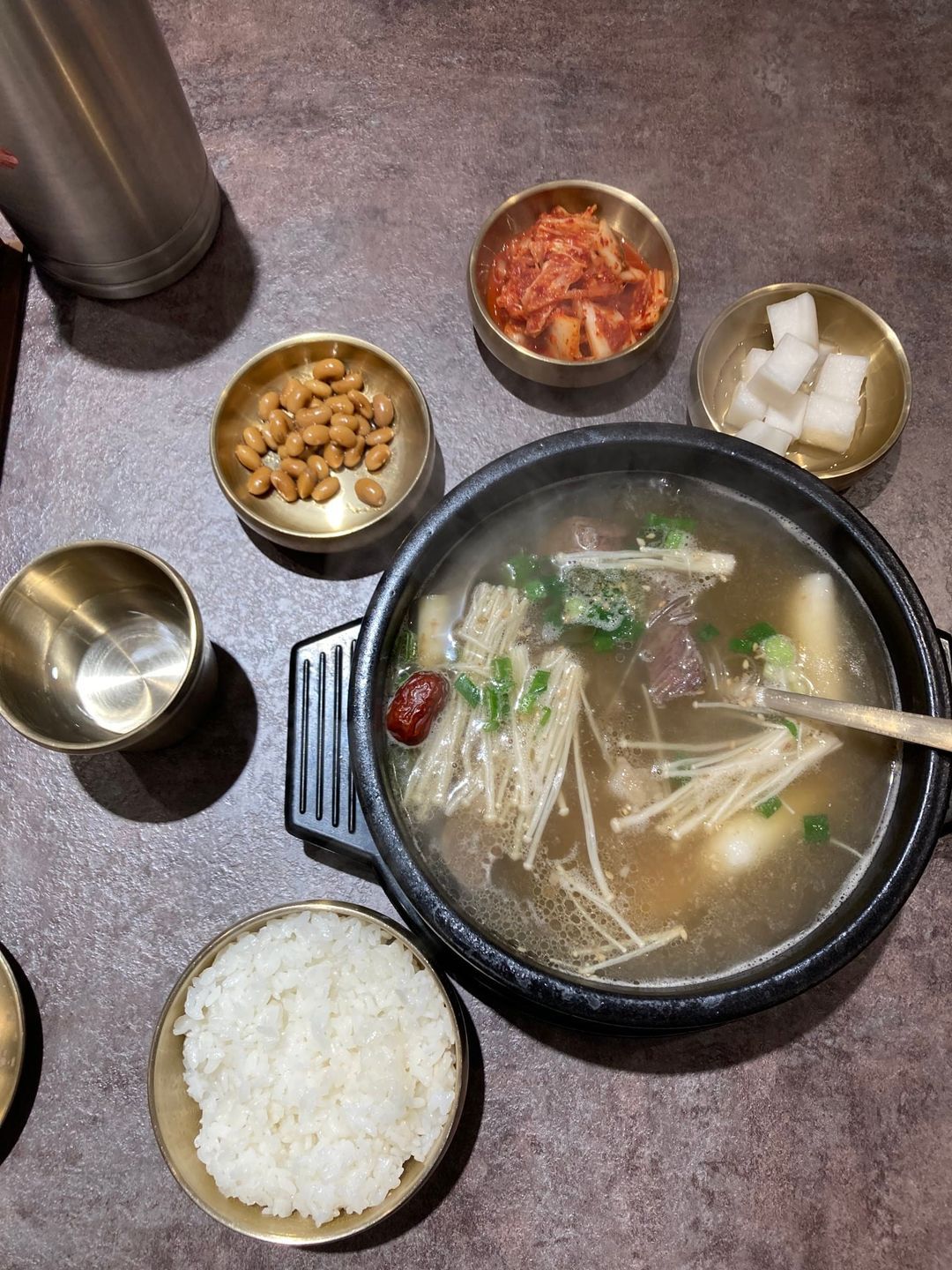
Chung Nam Restaurant
No. 88, Section 3, Renai Road, Daan District, Taipei City Opening Hours: Daily 11:00–14:30; 17:00–21:00
This restaurant is well-known in Taipei, just opposite the old Air Force headquarters. Looking closely at the menu, many of the dishes are from Jianghuai and Sichuan dishes, and generally speaking, they are an assembly of southern cuisines; before the Zhuji Pie next door was relocated, they used to sit here from south to north to appease the air force generals from other provinces. The official's stomach and nostalgia.
If you come with two people, order a "braised lion head" and "mapo tofu" and it's very enjoyable; if you come with three or four people, you can consider replacing "mapo tofu" with "doubanyu", and add green vegetables or "double-cooked pork". ".
The most evil thing here is all-you-can-eat rice, and besides the Penglai rice that Taiwanese are accustomed to, it is also served in Lai rice - but I am not used to eating rice in Lai rice, I don't know if it was used to cater to the appetite of other provinces in the early days of. When I was young, I had a record of eating six bowls of rice here;
If you don't order soup, the store will provide bean and vegetable clear soup, to remove oil and greasy; the garlic and raw chili sauce next to the rice cooker is also very flavorful - even if it is only served with raw chili, I can shave off a whole bowl of rice.
Every meal time, the restaurant is always crowded with diners waiting to be seated, and the boss will shout with anger but sincerity, speaking in a southern accent from other provinces that is hard to hear in Taipei today.
When I visited today, it happened to be the election day for the recall of Zhongzheng District, and the families from other provinces at the adjacent table were still discussing the election situation; the boss greeted the guests and said, "Alas, what are you voting for, there is no one voting at all."

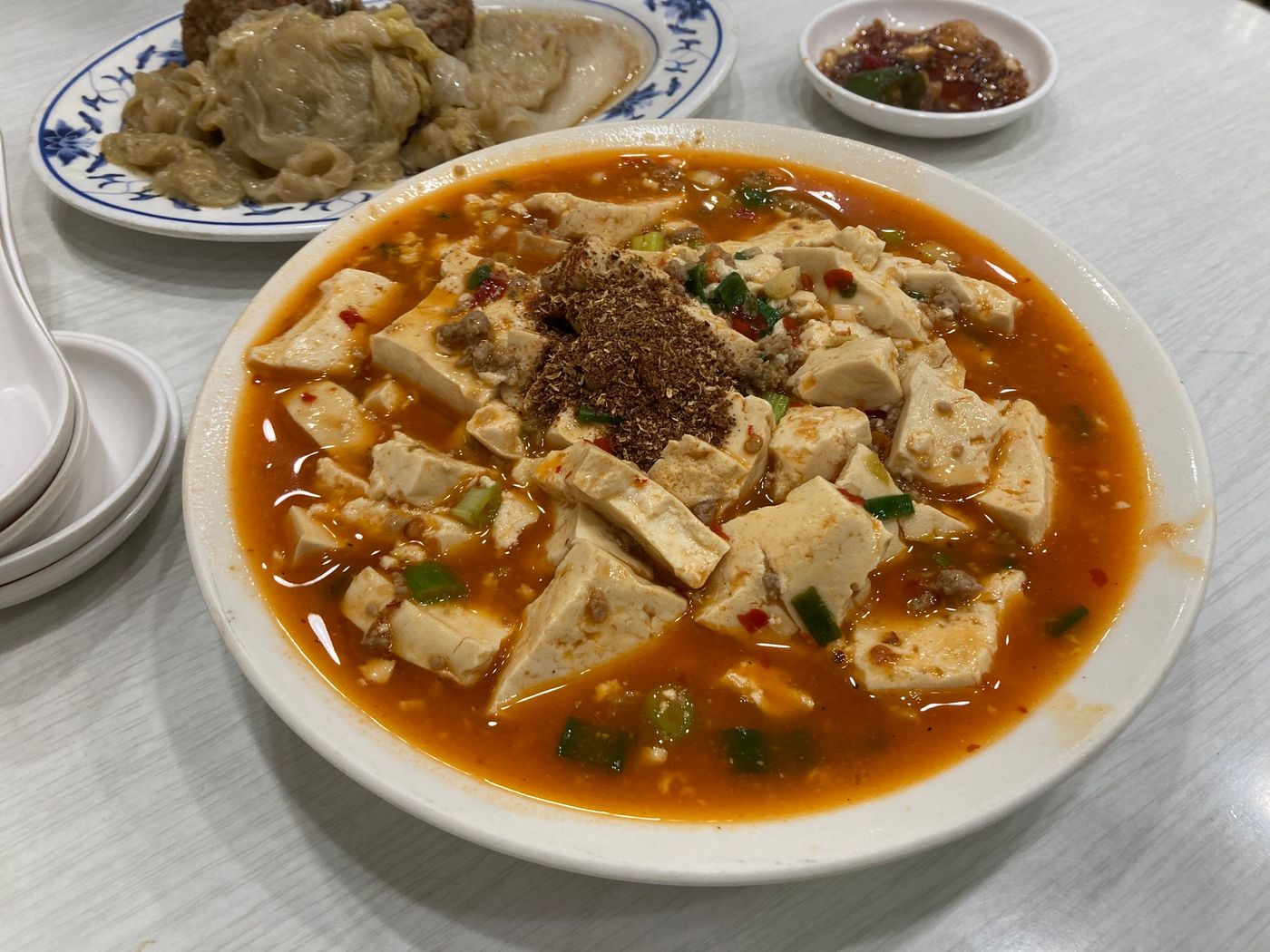
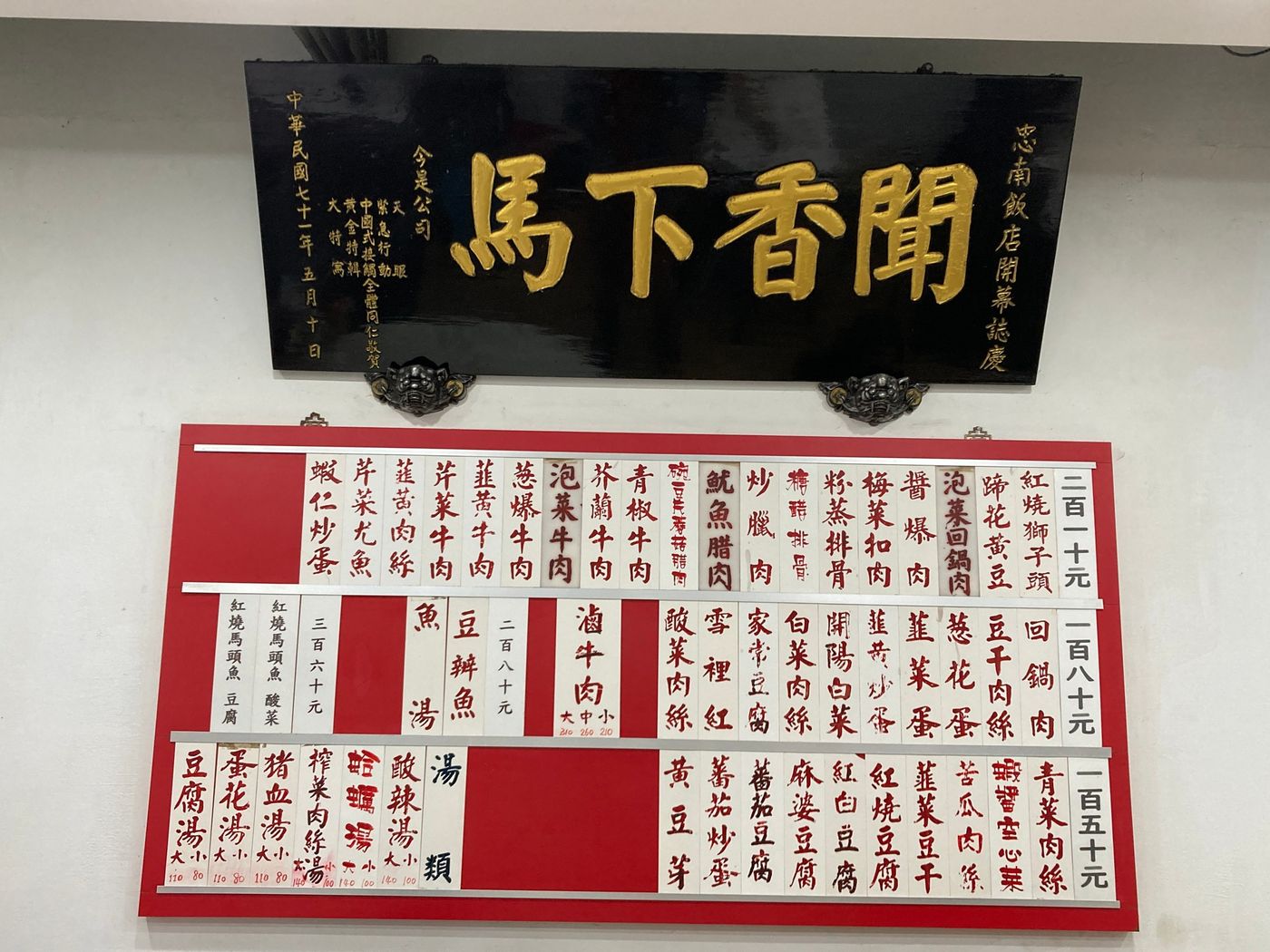
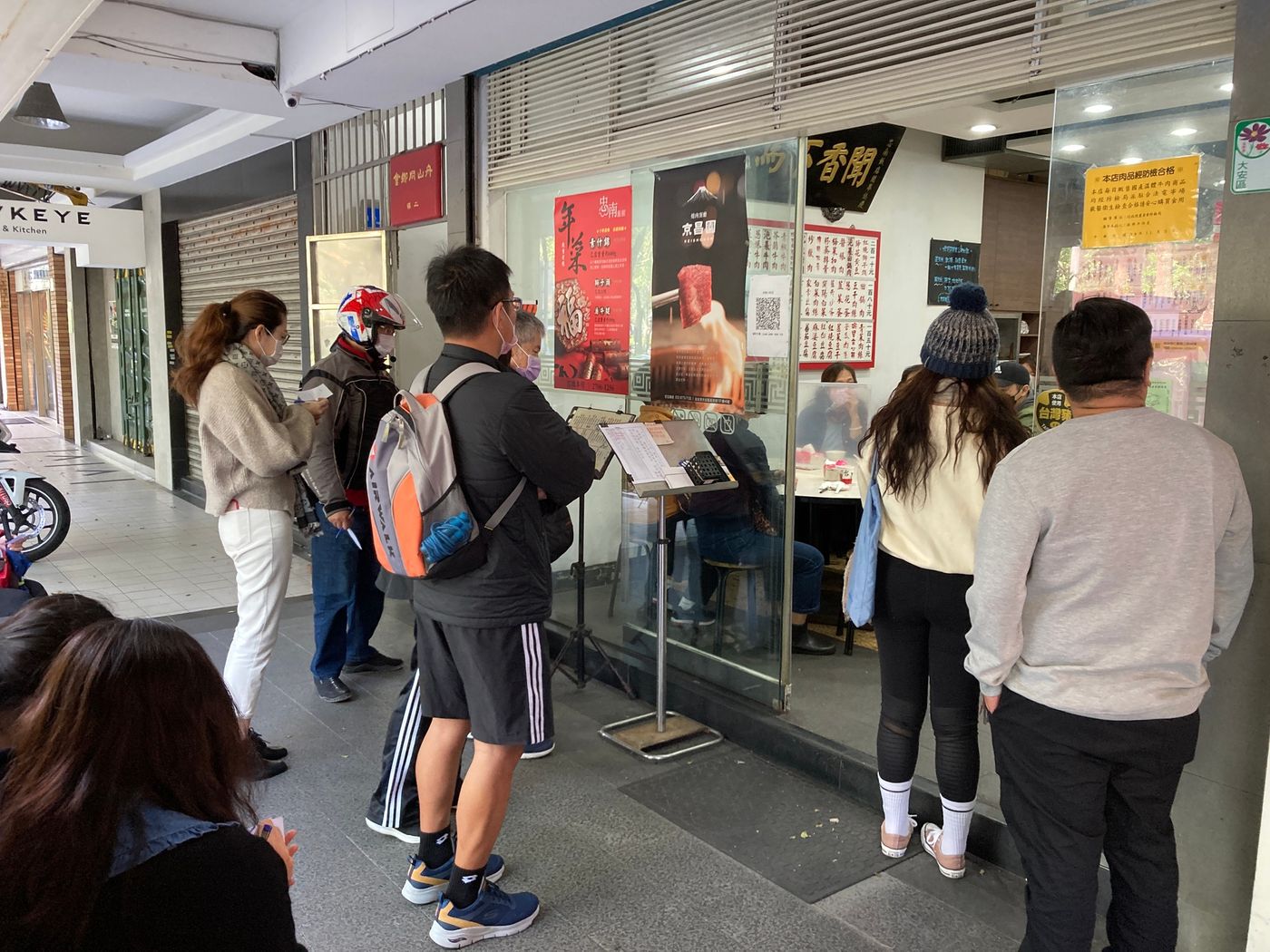
Chandu
No. 6, Lane 128, Section 3, Civic Avenue, Daan District, Taipei City Opening Hours: Tue-Fri 17:00–21:30; Sat, Sun 11:00–14:30, 17:00–21:30
This small shop near Beijing University of Science and Technology should be my favorite Indonesian restaurant in Taipei recently.
Every time I come during the week, it is hard to find one. In addition to Indonesian students studying nearby, some Taiwanese also come to try it. My favorite is their fried chicken rice with yellow sauce, served with Balinese chili, it reminds me of the Ayam goreng I had on the roadside when I was riding a motorcycle across Java 7 years ago, and the taste of the chili is very delicate.
There is another reason why I love this restaurant.
There are basically two types of Indonesian restaurants in Taipei: one is a time-honored restaurant opened by overseas Chinese in Indonesia, such as "Panshifang" on Leli Road, which is not cheap; the other is a buffet serving migrant workers, such as A few rooms near Taipei Main Station are generally rudimentary in decoration.
This new restaurant belongs to a completely new type: it is not opened by overseas Chinese, and the decoration is light and has a "wenqing style". It serves young Indonesian students studying in Taiwan, and the taste is exquisite and the price is cheaper than the overseas Chinese restaurant. .
To go further, this restaurant actually reflects a phenomenon: Taiwan's Southeast Asian ethnic groups are no longer just overseas Chinese and migrant workers, and Taipei's Southeast Asian food scene has also become more diverse and richer.

A fat noodle shop
No. 230-1, Section 2, Guiyang Street, Wanhua District, Taipei City Hours: Monday-Saturday 10:00–20:00
One night, I suddenly wanted to go to Huaxi Street to eat gua bao with Chang Hong's chrysanthemum noodles, but unfortunately there were more than a dozen people in front of the gua bao stall, and Chang Hong sold out early (again), so I found this old noodle next to Qingshan Palace. shop.
I ordered the braised pork bento with wonton soup, both of which are very refreshing and clean. The base is lard bibimbap, and the braised pork is marinated with Chinese medicine. The taste is not inferior to the first place in Taipei roast pork. "Selling Yan Zai", but not as greasy as Yan Zai.
Wonton soup is said to be "wonton", but it is actually "flat food" in Taiwan province (I always think "wonton" is something from other provinces, like "Qifu flat food" to me, it is more like "wonton"), flat food noodles and The filling is a bit like the wontons of "Spaghetti King", but it is not so firm and sweet, and the soup is mushroom and coriander flavor, which is really delicious.
Looking up, I found that this store is indeed a time-honored brand in Taipei, only one year younger than Tsai Ing-wen's "Republic of China" (but by the standards of Tainan, it can only be regarded as a lightweight time-honored brand...
The cutest is that there are a lot of regular customers here: a brother in uniform came far away playing a mobile game with his head down, and the lady boss said, "The little brother with wonton noodles is here again"; the brother didn't order food, so he sat down and continued playing the mobile game , Waiting for the lady boss to come to the table.
The only downside is that the price is a bit higher, the roasted pork bento with wonton soup is 150 dayang ─ the same amount, it is about half the price in the noodles (but why not increase the price now...
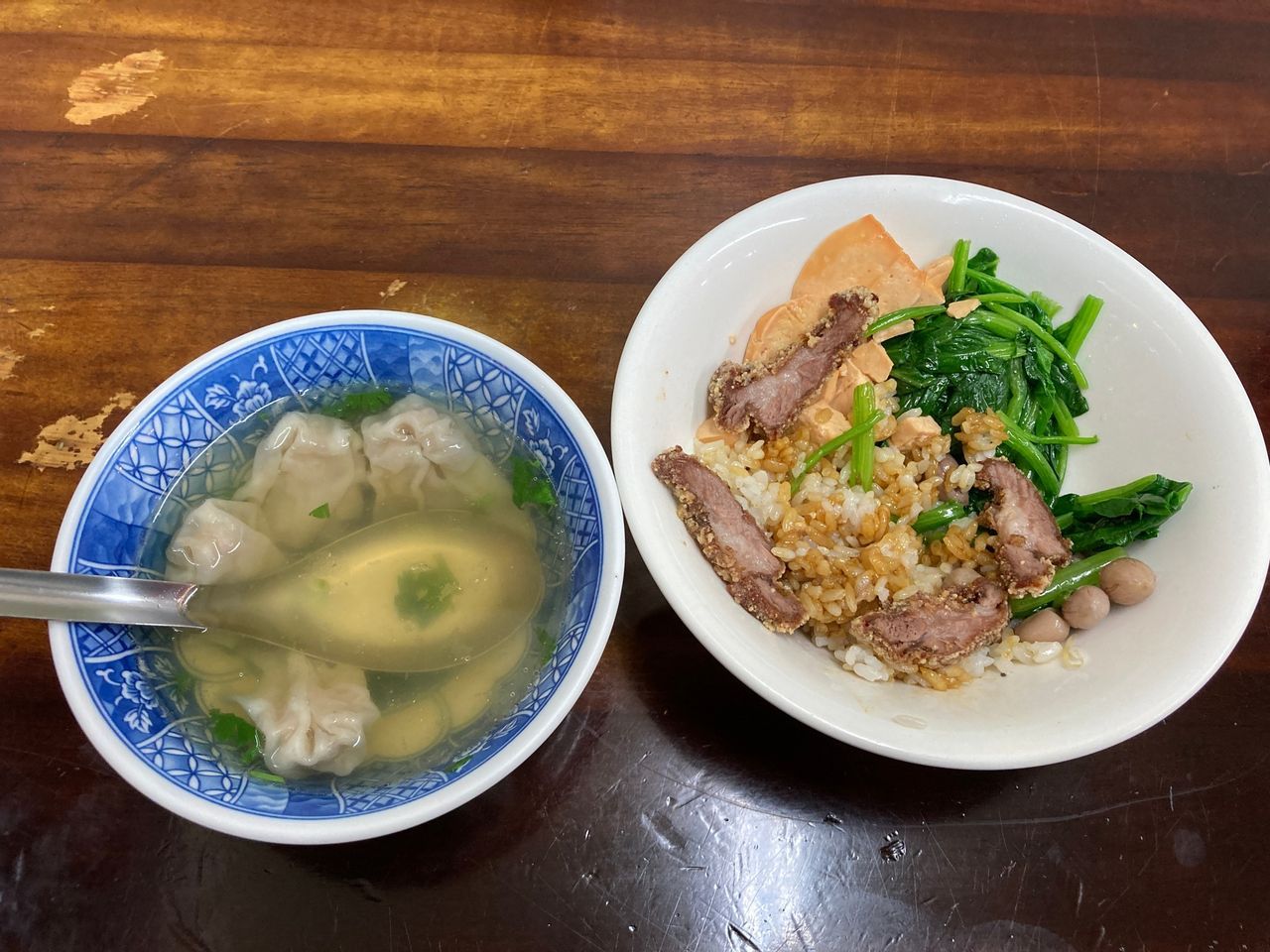
Lin's Dry Noodles
No. 11, Quanzhou Street, Zhongzheng District, Taipei City Business Hours: Tuesday-Friday 06:00–14:00 16:30–19:30; Saturday-Sunday 06:00–14:00
Some flavors really take some time to taste.
When I was in high school before, I never thought that the Lin family dry noodles next to the school gate were delicious - the noodles were bland and the fish balls wrapped in eggs were too homely. At that time, the most frequented shop was the old Jianzhong noodle shop, which was a little further away.
After graduating from college, I went back to eat Lao Jianzhong, the same combination actually rose to 70 yuan, and for some reason, the taste seemed to be too thick. When I tried the Lin family again, I felt that the blandness was actually very enjoyable.
Lin's dry noodles have a special feature: they sell very few items, and the menu on the wall is very simple, that is, dry noodles, and soups that can be added with eggs and fish balls; the few you can choose is that the dry noodles should be large, medium and small. , and the egg in the soup, whether it is to be broken up or a complete omelet. (Okay, there are a few other side dishes that you can ignore that aren't on the menu.)
But the plain Lin's dry noodles are also one of the most varied snack bars I have ever seen customers eat.
The old man who was sitting across from me today added two more fish balls to the soup, and then used an iron spoon to cut the fish balls in half one by one in the soup.
As I watched it, I felt terrified at the same time: Wouldn't the delicious gravy in the fish balls flow out like this? You know, every time I scoop up the fish balls, I eat them carefully and in two bites, for fear that the gravy will overflow the spoon (that is the soul of the Lin family fish balls).
But on second thought, Lin's fish ball soup has always been bland and tasteless. If the delicious gravy in the fish balls melted into the soup, it should be good too, right?
So I followed the old man's shocking practice and cut the only two fish balls I had in the soup one by one - I didn't expect the effect to be amazing! At the end of the meal, I almost wanted to present the Nobel Prize to my old man.
So I remembered that I came to eat the dry noodles of the Lin family a few months ago, and I also met another old man. He also taught me the secret recipe of his experience of eating the Lin family for decades: add an extra half-boiled egg to the dry noodles, and pierce it. Then, the noodles are covered with egg yolk liquid, "it's more slippery to eat this way."
So much so that when I was in the dry noodles in the Lin family, I occasionally saw someone who would split the preserved egg, stir it into the dry noodles and eat it, so I could look at it calmly.
On second thought, this kind of eating spirit of letting customers do whatever they want and eat whatever they like is actually very Taiwanese.
The hand-cranked drink shop can choose to go to the ice and half sugar shop, and the ice-cut shop can choose their own ingredients (choose the Abi hell for patients with difficult diseases), which is probably the embodiment of this "happy spirit": not to impose their own standards for judging whether they are good or bad. In other people, the guests are allowed to freely choose how to eat to the greatest extent possible - the Taiwanese society that allows this phenomenon to exist, probably really has something that is very different from some other societies.
This kind of rejoicing spirit is really a very different cultural mentality compared to some eating methods that emphasize props, steps, and even rigidly require customers to eat according to the chef's regulations.
So I remembered that I once went to the (ㄏㄜ) and (ㄇㄧㄢˇ) wine (ㄈㄟˋ) exhibition (ㄉㄜ˙), holding a wide-mouthed wine glass and begging for wine everywhere to try it, and I actually encountered a The connoisseur (aka the Devil of Taste) asked me coldly, where did you get this glass from?
"Don't drink from a wine glass with such a wide mouth. You're throwing money away like this. It's better to drink from a mug than you."
After seeing the old man cut the fish balls in half at the dry noodles of Lin's house, I really wanted to travel back in time and go back to the connoisseur and say to the connoisseur—Mr. Gan Lin, I just like to drink wine from a mug, what are you doing? ? ?
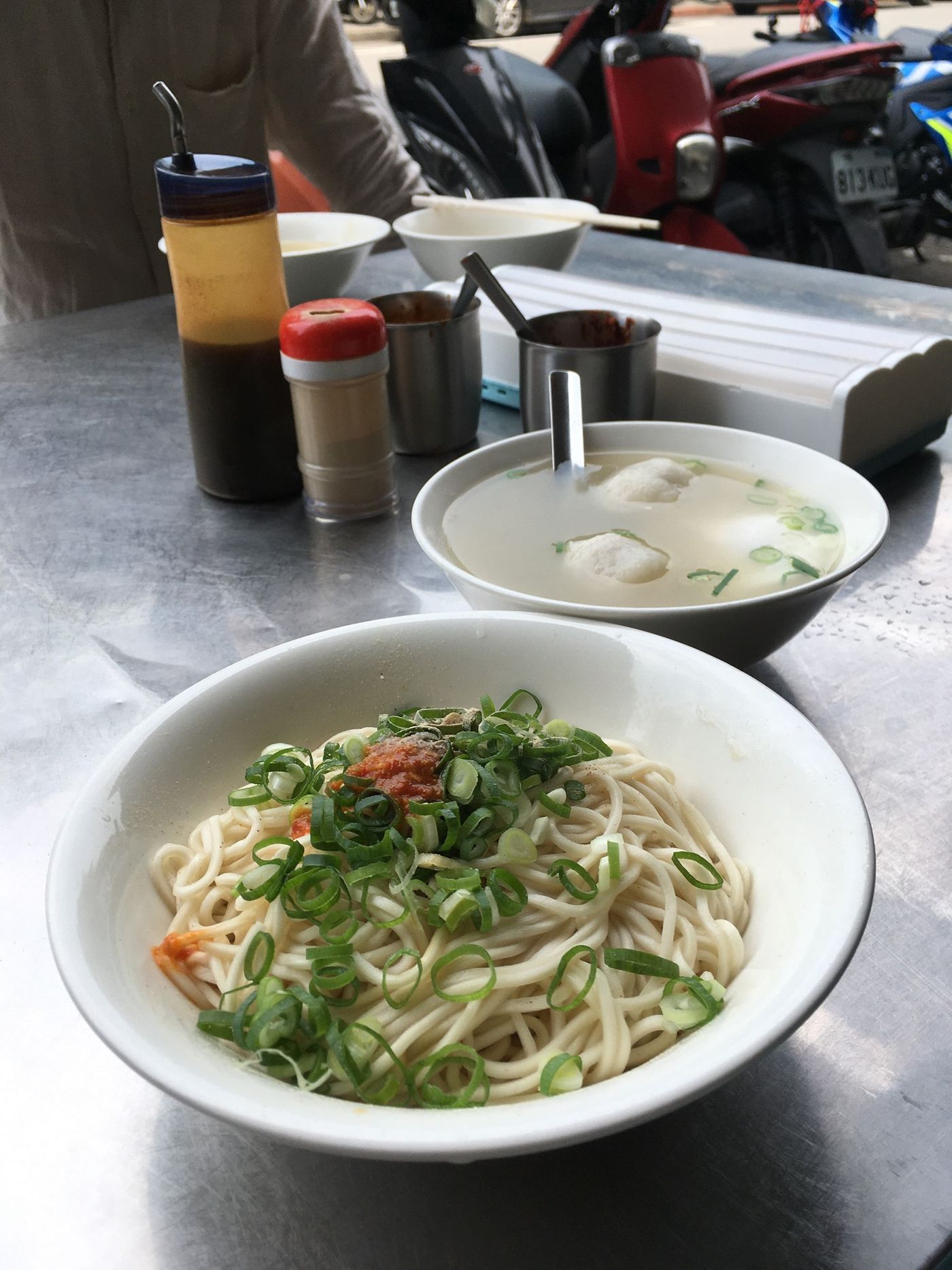

Like my work?
Don't forget to support or like, so I know you are with me..
Comment…